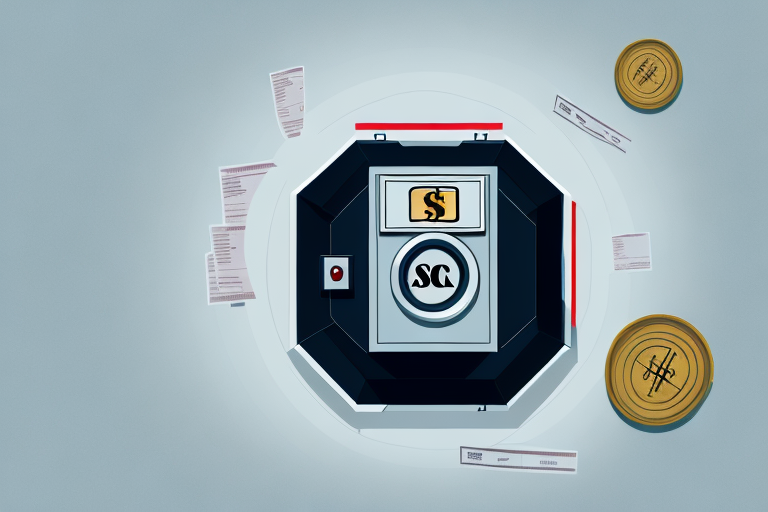Are you looking for ways to make the most out of your retirement savings? Setting up a Self-Managed Super Fund (SMSF) might be the solution you’re searching for. SMSFs give you complete control over where your retirement savings are invested, providing greater flexibility and investment opportunities compared to traditional super funds. In this article, we’ll explore the benefits of SMSFs and guide you through the process of setting up and managing your SMSF.
Understanding SMSF Management and Its Benefits
Retirement planning is a crucial aspect of financial planning, and one of the most important decisions you will make is how to manage your superannuation. One option that is gaining popularity in Australia is smsf management. This private superannuation fund is regulated by the Australian Taxation Office (ATO) and offers several advantages over traditional super funds.
What is a Self-Managed Super Fund (SMSF)?
A Self-Managed Super Fund is a private superannuation fund that is regulated by the Australian Taxation Office (ATO). SMSFs let you take control of your retirement savings and make your own investment decisions. They allow you to invest in a wide range of assets, including property, shares, and cash, giving you greater control over your investment returns and capital growth.
One of the significant advantages of SMSFs is that they are tailored to suit individual needs. SMSFs are ideal for those who want to take a more active role in managing their retirement savings and have a more diversified investment portfolio. SMSFs are also suitable for those who have a higher level of financial literacy and are comfortable with making investment decisions.

Another advantage of SMSFs is that they offer greater flexibility and control. You have complete control over your investment decisions, such as where, how, and when your money is invested. This level of control is not available in traditional super funds, which are managed by professional fund managers.
Advantages of SMSF for Retirement Planning
The advantages of SMSF for retirement planning are numerous. First, SMSFs offer greater flexibility and control. You have complete control over your investment decisions, such as where, how, and when your money is invested. This level of control is not available in traditional super funds, which are managed by professional fund managers.
Second, SMSFs allow you to take advantage of investment opportunities that are not available in traditional super funds, such as direct property investments and alternative investments. This means that you have access to a broader range of investment opportunities, which can help diversify your portfolio and potentially increase your returns.
Third, SMSFs have lower fees compared to traditional super funds for larger account balances, making them a cost-effective option for retirement planning. SMSFs are also more transparent, and you can see exactly what fees you are paying and what services you are receiving.
SMSF vs. Traditional Super Funds
Traditional super funds are managed by professional fund managers who invest your money in pre-selected assets. In contrast, SMSFs give you complete control over your investment decisions. SMSFs allow you to invest in a wide range of assets, including property, shares, and cash, providing greater flexibility and investment opportunities.
Another significant advantage of SMSFs is that they offer greater tax benefits. SMSFs allow you to take advantage of strategies such as tax-deductible contributions and franking credits. This can help you maximize your retirement savings and potentially reduce your tax liability.
In conclusion, SMSFs offer several advantages over traditional super funds, including greater control, flexibility, and investment opportunities. SMSFs are ideal for those who want to take a more active role in managing their retirement savings and have a more diversified investment portfolio. If you are considering an SMSF, it is essential to seek professional advice to ensure that it is the right option for you.
Setting Up Your SMSF
Setting up a Self-Managed Super Fund (SMSF) can be a great way to take control of your retirement savings. However, it’s important to understand the eligibility criteria, choose the right structure, create the trust deed, and register your SMSF with the Australian Taxation Office (ATO) to ensure compliance with the law.
Eligibility Criteria for SMSF Setup
Before setting up an SMSF, it’s important to ensure that you meet the eligibility criteria. Firstly, you must be over 18 years old. Secondly, your SMSF must have four or fewer members. Lastly, all members of the SMSF must be considered “trustees” or “directors” of the trustee company.
If you’re unsure whether you’re eligible to set up an SMSF, it’s always best to consult a professional financial adviser. They can help you understand the legal requirements and obligations associated with setting up an SMSF.

Choosing the Right Structure: Individual or Corporate Trustee
When setting up your SMSF, you must choose between having an individual trustee structure or a corporate trustee structure. An individual trustee structure means that all members of the SMSF are trustees, whereas a corporate trustee structure means that the SMSF is set up as a company, and each member is a director of the company.
Choosing the right structure is crucial, as it will affect the SMSF’s compliance obligations and costs. For example, if you choose an individual trustee structure, each member will need to sign all legal documents related to the SMSF. This can be time-consuming and costly. On the other hand, a corporate trustee structure can provide greater protection for the SMSF’s assets and make compliance easier.
Creating the Trust Deed and Appointing Trustees
The next step in setting up your SMSF is creating the trust deed. The trust deed outlines the rules and regulations that govern the SMSF. It’s important to ensure that the trust deed meets all legal requirements and reflects the intentions of the members.
You must also appoint trustees or directors, who are responsible for managing the fund’s affairs. It’s important to select trustees with significant knowledge and experience in investment strategy and compliance obligations. The trustees must act in the best interests of the SMSF’s members and ensure compliance with all legal requirements.
Registering Your SMSF with the ATO
After creating the trust deed and appointing trustees, you must register your SMSF with the ATO. Registration involves providing the ATO with details about the fund, including the trustees’ details, the SMSF’s members, and the fund’s investment strategy.
It’s important to note that SMSFs are subject to strict compliance requirements, and failure to comply can result in significant penalties and even the loss of the SMSF’s complying status. Therefore, it’s essential to seek professional advice throughout the process of setting up and managing your SMSF to ensure compliance with the law.
Building Your SMSF Investment Strategy
Investing in a self-managed super fund (SMSF) can be a great way to take control of your retirement savings. However, it’s important to have a solid investment strategy in place to ensure that your SMSF is working hard for you. In this article, we’ll explore some key considerations when building your SMSF investment strategy.
Diversifying Your SMSF Portfolio
Diversification is an essential aspect of an SMSF investment strategy. Diversifying your SMSF investment portfolio means ensuring that your investments are spread across different types of assets. This practice helps reduce the risk of losses and provides opportunities for good returns. Some common types of investments in the SMSF portfolio include property, shares, cash, and fixed income investments.
For example, investing in shares can provide an opportunity for capital growth, while cash and fixed income investments can provide more stable returns. Property investments can offer both capital growth and cash flow through rental income. By diversifying your SMSF portfolio, you can balance the potential for high returns with the need to manage risk.
Understanding Risk and Return
When investing in an SMSF, it’s essential to understand the relationship between risk and return. In general, higher-risk investments such as shares and property offer the potential for higher returns. However, they also carry a higher risk of losses. Investing in lower-risk assets such as bonds and cash can provide more stable returns but offer less opportunity for capital growth. It’s important to strike a balance between risk and return when building your SMSF investment strategy.
It’s also important to consider your investment time horizon. If you have a long time until retirement, you may be able to take on more risk in your SMSF portfolio. However, if you’re nearing retirement, you may want to focus on more conservative investments to protect your capital.
Incorporating Property Investments into Your SMSF
Investing in property is a popular option for SMSFs. Property provides an opportunity for capital growth and cash flow through rental income. However, investing in property through an SMSF comes with additional compliance obligations, such as the requirement to undertake a property valuation at least once every three years.
When considering property investments for your SMSF, it’s important to do your research and seek professional advice. You’ll need to consider factors such as the location of the property, rental yields, and potential capital growth. You’ll also need to ensure that the property is purchased and managed in compliance with SMSF regulations.
The Role of Life Insurance in Your SMSF Strategy
Life insurance is an essential aspect of an SMSF investment strategy. If a member of the SMSF were to pass away, life insurance ensures that their beneficiaries receive the funds in the SMSF. It’s important to select the right type and level of insurance for your SMSF and review it regularly to ensure that it remains suitable for your circumstances.
When selecting life insurance for your SMSF, you’ll need to consider factors such as your age, health, and financial situation. You’ll also need to consider the needs of your beneficiaries and ensure that the insurance policy is structured in a tax-effective way.
In conclusion, building a solid SMSF investment strategy requires careful consideration of factors such as diversification, risk and return, property investments, and life insurance. By seeking professional advice and doing your research, you can ensure that your SMSF is working hard for you and your retirement goals.

Managing Your SMSF Ongoing Compliance and Reporting Requirements
Managing an SMSF also involves ongoing compliance and reporting requirements. These include preparing financial statements, lodging annual tax returns, and complying with superannuation laws and regulations. Compliance is a crucial aspect of SMSF management, and it’s important to seek professional advice and support to ensure that you meet all your obligations.
Annual Audits and Taxation
An annual audit is required for all SMSFs. The audit ensures that the fund meets all the compliance requirements set out by the ATO and is in good financial health. SMSFs are also subject to taxation, and it’s important to understand the tax rules and regulations that apply to your fund.
Updating Your Investment Strategy and Trust Deed
Last but not least, SMSF management involves regularly reviewing and updating your investment strategy and trust deed. Investment markets, economic conditions, and personal circumstances can change over time, and it’s essential to ensure that your SMSF investment strategy remains relevant and aligned with your objectives. The trust deed should also be reviewed regularly to ensure that it remains up-to-date and compliant with the latest regulations and laws.
Unlock the Potential of Your Retirement with SMSF Setup
In conclusion, setting up an SMSF can offer greater control, flexibility, and investment opportunities compared to traditional super funds. However, it’s essential to follow a strict process when setting up and managing an SMSF to meet all compliance obligations and regulations. Seek professional advice, review your investment strategy and trust deed regularly, and tailor your investment decisions to meet your retirement goals. With an SMSF, you can unlock the potential of your retirement and enjoy greater control over your financial future.
More to read: Buyers Agent: Full Guide To Buying Property in Australia






